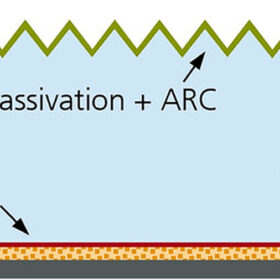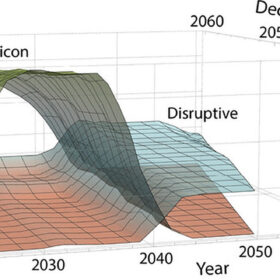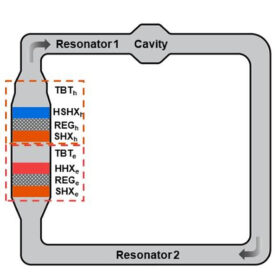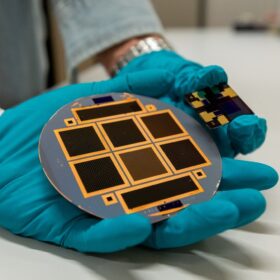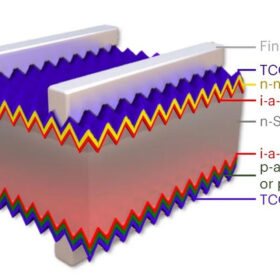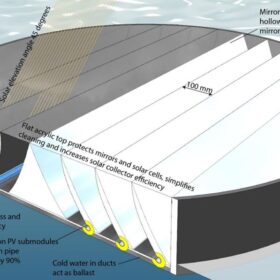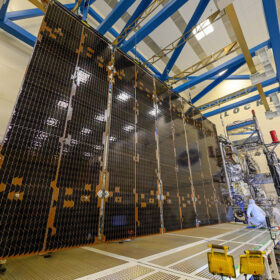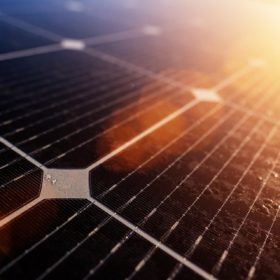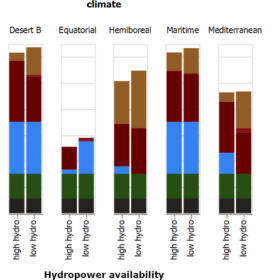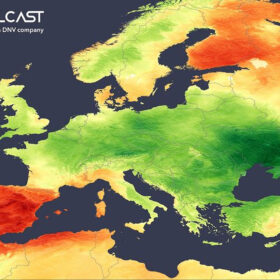Epitaxially grown p-type wafers with TOPCon rear emitter solar cells
Scientists from Fraunhofer ISE have sought to utilize epitaxially grown p-type silicon wafers TOPCon rear emitter (TOPCore) solar cells with the aim of reducing production costs and carbon footprint. They claim this combination is paving the way for TOPCore devices that exceed 25% efficiency.
The world can manufacture enough solar to reach decarbonization goals
NREL researchers model viable pathways to supplying the estimated 60 TW of capacity required for decarbonization, and study the effect that disruptive solar technologies may have on deployment cost and market opportunity.
Novel thermoacoustic heat pump system for residential applications
Developed by Chinese researchers, the system is designed to reach a heating capacity of 5.7 kW and an overall coefficient of performance of 1.40 at nominal conditions. It is made with an engine unit, a heat pump unit, and a gas resonator unit in a loop.
The PV scientific community’s rush to the latest efficiency record
Perovskite-silicon tandem technology expert Gianluca Coletti explains what cycles the PV industry and scientific community experience every time there are new jumps in power conversion efficiencies at cell level. According to him, we are experiencing a much faster turnover of efficiency records typical of the early stage of development of a new technology holding an incredible potential.
A closer look at Longi’s world record-breaking, 26.81%-efficient heterojunction solar cell
An international research group led by Longi Central R&D Institute has published a paper describing Longi’s heterojunction solar cell based on a full-size silicon wafer that made a sensation in November, as it beat the long-lasting efficiency record held by Japanese manufacturer Kaneka for years. The researchers attributed the cell efficiency improvement to the implementation of a p-type amorphous silicon hydrogenated layer together with a modified transparent conductive oxides contact, which they said greatly reduced the cell contact resistivity.
Floating concentrating photovoltaic thermal system for carbon capture
Two Norwegian companies are designing floating concentrating photovoltaic thermal technology that can produce both electricity and heat. It is intended for use in carbon capture projects and to be supported by an industrial heat pump system.
Fold-out NASA satellite solar array undergoes successful test deployment
The NASA/NOAA satellite, part of the GOES-R series, operated as expected in its terrestrial test, making it one step closer to launch.
Shanghai Tianchen enters solar cell production with 20 GW factory
The Chinese investment firm said the factory will have an initial solar cell capacity of 5 GW and will also produce storage systems. The project requires an investment of CNY 11.6 billion ($1.67 billion).
The Hydrogen Stream: Electrolysis is cost-efficient in all climates, says Finnish team
Researchers at the VTT Technical Research Centre of Finland said that chemical energy storages were needed for short and long-term balancing in every climate region, especially in the northern climates. Meanwhile, companies are moving forward with their plans to produce hydrogen in Namibia and Morocco.
Low pressure impacted Europe PV production in April
In a new weekly update for pv magazine, Solcast, a DNV company, presents the solar irradiance data it collected for Europe in April. These data show that Spain benefitted from solar irradiance 20% to 30% above average during the last month, while in the rest of Europe irradiance was below average.
